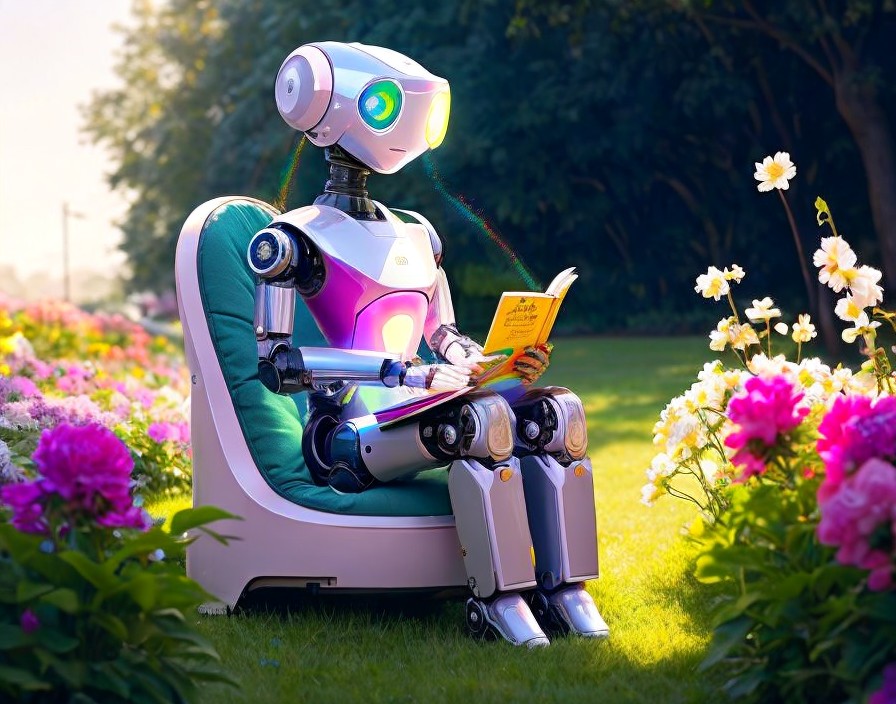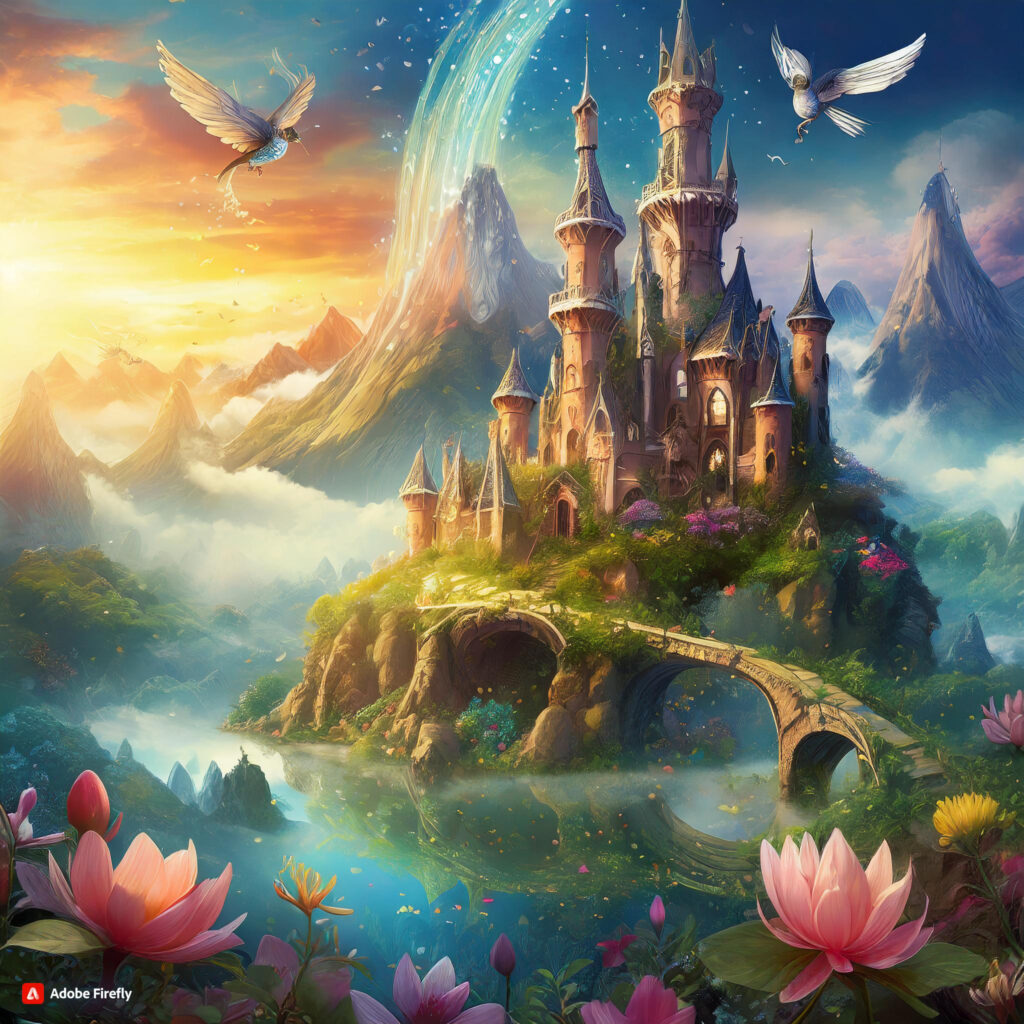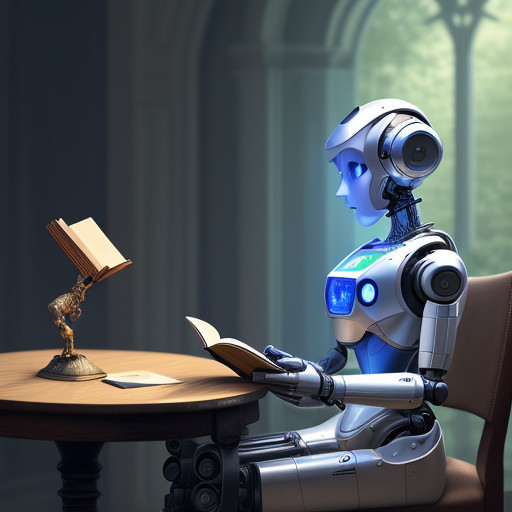
Table of Contents
ToggleFrom Visions of the Future to Blueprints for Invention: How Sci-Fi Sparked Technological Innovation (1800s-Present)
For centuries, science fiction (sci-fi) has been a playground for the imagination, exploring fantastical concepts and pushing the boundaries of what seems possible. But what many might need to realize is that sci-fi has also played a crucial role in inspiring and shaping real-world technological advancements. This section will delve into the fascinating relationship between sci-fi and invention, highlighting specific examples from the past 100 years.
Early Pioneering Visions (1800s):
Jules Verne: Considered one of the “Fathers of Science Fiction,” Verne’s visionary novels like “Twenty Thousand Leagues Under the Sea” (1870) and “Robur the Conqueror” (1886) planted the seeds for the development of submarines, airplanes, and even rockets. His detailed descriptions and technical considerations fueled the imaginations of engineers and inventors.
H.G. Wells:Another genre giant, Wells’ works like “The War of the Worlds” (1898) explored themes of advanced weaponry and alien communication, influencing the development of radio technology and military strategies.
From Fiction to Reality (1900s-1950s):
Communication Devices:The iconic communicator from Star Trek, introduced in the 1960s TV series, resemblance to our modern cellphones. Earlier works like Hugo Gernsback’s “Ralph 124C 41+” (1911) even featured a portable device for two-way communication, foreshadowing the rise of mobile technology.
Robots and Automation:The concept of robots working alongside humans has been a staple of sci-fi since Karel Capek’s play “R.U.R.” (Rossum’s Universal Robots) in 1920. Today, industrial robots and automation are transforming manufacturing and various industries, fulfilling a vision once relegated to the pages of sci-fi.

The Space Age and Beyond (1960s-Present):
Space Exploration:
Sci-fi writers like Arthur C. Clarke (“2001: A Space Odyssey,” 1968) and Isaac Asimov (“Lucky Starr” series, 1950s) popularized the idea of space travel and colonization. Their detailed descriptions of space stations, artificial satellites, and lunar exploration have undeniably influenced the trajectory of real-world space programs.
The Internet and Artificial Intelligence:
The concept of a vast, interconnected network of information sharing has been explored in works like Frederik Pohl’s “Heechee Saga” (1977) and William Gibson’s seminal cyberpunk novel “Neuromancer” (1984). These visions hold a strong resemblance to the internet and the ongoing development of artificial intelligence (AI), a theme explored in countless sci-fi works, from Asimov’s “I, Robot” (1950) to Philip K. Dick’s “Do Androids Dream of Electric Sheep?” (1968).
The Enduring Legacy:
Sci-fi’s influence on technological innovation continues to this day.Novels like Neal Stephenson’s “Snow Crash” (1992) with its virtual reality world are eerily similar to the development of VR technology. As we delve deeper into fields like robotics, genetic engineering, and space exploration, sci-fi continues to provide both inspiration and cautionary tales, shaping the conversation about the ethical implications of scientific progress.
For centuries, science fiction (sci-fi) has functioned as a realm for creative thought, delving into extraordinary ideas and challenging the limits of plausibility. However, it is often overlooked that sci-fi has been instrumental in motivating and influencing actual technological progress.
As we delve deeper into fields like robotics, genetic engineering, and space exploration, sci-fi continues to provide both inspiration and cautionary tales, shaping the conversation about the ethical implications of scientific progress.
Sci-Fi’s Impact on Technological Innovation:Beyond the Obvious
While the connection between science fiction (sci-fi) and communication devices or space exploration is well-documented, the genre’s influence on technological innovation goes far deeper. This section explores some lesser-known yet impactful ways sci-fi has shaped the landscape of technological advancement.
The Rise of Wearable Tech:
While the “tricorder” from Star Trek is often cited as an inspiration for medical scanners, sci-fi’s influence on wearable tech extends far beyond healthcare. Works like Philip K. Dick’s “A Scanner Darkly” (1977) featured head-mounted displays used for communication and information access, foreshadowing the development of augmented reality (AR) glasses. Similarly, Neal Stephenson’s “The Diamond Age” (1995) introduced the concept of neural interfaces for seamless human-computer interaction, a concept actively being pursued by researchers today.
Reimagining Transportation:
Flying cars, a staple of sci-fi since the early days, may not be a reality yet, but the genre has undoubtedly influenced advancements in transportation technology. Hyperloop technology, inspired by futuristic transportation systems in works like Robert Heinlein’s “Friday” (1982), proposes high-speed travel through reduced-pressure tubes. Elon Musk’s Hyperloop One is a testament to how sci-fi visions can spark real-world engineering challenges.
The Quest for Sustainable Solutions:
While sci-fi often depicts dystopian futures ravaged by environmental neglect, it also offers inspiring visions of sustainable societies. Ursula K. Le Guin’s Hainish Cycle novels (1960s-2000s) explore societies living in harmony with nature, influencing the development of concepts like closed-loop ecological systems being explored by space agencies for long-term space travel. Additionally, sci-fi’s exploration of alternative energy sources like fusion power, a concept popularized in works like Isaac Asimov’s “The Stars Like Gods” (1974), continues to drive research in the field of clean energy.
The Frontiers of Medicine:
Using regenerative medicine to repair or replace damaged organs and tissues has been a recurring theme in sci-fi. Works like Cordwainer Smith’s “The Rediscovery of Man” (1953) featured technologies for cellular manipulation and tissue engineering, concepts that are now being actively researched for real-world medical applications. Furthermore, sci-fi’s exploration of genetic engineering, a prominent theme in Aldous Huxley’s “Brave New World” (1932), has fueled advancements in gene editing technologies like CRISPR, raising significant ethical debates the genre itself has often explored.

Beyond Tech:
Sci-Fi’s Big Ideas Shape Our World
Spaceships and robots are cool, but sci-fi’s real power lies in the ideas it explores. These stories don’t just dream up gadgets, they ask big questions about:
Living with Machines (AI):
Will robots be our friends or foes? Sci-fi explores both sides, making us think about the dangers and potential of super intelligence.
Saving Our Planet (Climate Change):
From alien wastelands to lush, recycled worlds, sci-fi shows us the possible consequences of our choices. It can inspire us to protect our planet.
Who We Are (The Futureof Humanity):
Sci-fi lets us imagine what humans might become – smarter, stronger, even living on other planets! But it also asks if these changes will make us better or worse.
Sci-fi stories are like thought experiments, letting us explore these big ideas in a safe, fictional world. By sparking conversations, sci-fi can help us shape a better future for ourselves, right here on Earth.
Take for instance, the visionary works of Octavia Butler, a pioneer of Afrofuturism.
In her literary works such as “Parable of the Sower” (1993), the author portrays a forthcoming era in which mankind reconstructs itself following the breakdown of society. These novels serve as a source of inspiration, highlighting the enduring qualities of resilience and hope amidst challenging circumstances.
Similarly, Cixin Liu’s “The Three-Body Problem” (2006), a global phenomenon translated from Chinese, depicts humanity’s first contact with an alien civilization, sparking awe and igniting our collective curiosity about the vastness of the universe.
The Flip Side:Cautionary Tales and Ethical Dilemmas
Sci-fi doesn’t shy away from exploring the potential pitfalls of technological advancements.
Aldous Huxley’s “Brave New World” (1932) presents a disturbing depiction of a dystopian community governed by genetic manipulation and social conditioning.
This cautionary tale serves as a stark reminder of the ethical considerations surrounding scientific progress.
Similarly, the literary creations of Philip K. Dick, such as “Do Androids Dream of Electric Sheep?” (1968), challenge the boundaries between humanity and technology, compelling us to confront the essence of awareness and the moral consequences of artificial intelligence.
The Power of Shared Stories:A Guide for Tomorrow
Sci-fi serves as a societal compass by delving into various potential futures. Writers such as N.K. Jemisin, with her “Broken Earth” trilogy (2015-2017), prompt us to reflect on the possible impacts of climate change and environmental inequality.
In contrast, optimistic visions of interspecies cooperation, explored in works like Carl Sagan’s “Contact” (1985), encourage us to imagine a future of peaceful coexistence with potential extraterrestrial life. These shared stories become a springboard for real-world discussions about the direction of scientific progress and the kind of future we want to build.
Science fiction goes beyond foreseeing what’s to come; it influences it. By fueling our creativity, initiating discussions on ethics, and showcasing a variety of future perspectives, sci-fi significantly impacts the direction of technological progress and societal goals.
The Future We’re Writing:Sci-Fi’s Enduring Role in Shaping Our Tomorrows
Research labs and engineering workshops are now embracing sci-fi concepts more than ever before.
For instance, the concept of nanobots, microscopic robots introduced in Michael Crichton’s “Prey” (2002), are now being explored by scientists for potential applications in medicine and targeted drug delivery.
In the same way, virtual reality (VR) training simulations, as seen in Sherri Tepper’s “The Gate to the Rim” (1984), are currently being utilized by the military and surgeons for practicing intricate procedures in a secure, virtual setting.
Shaping the Conversation: Beyond Technology
Sci-fi’s influence goes beyond inspiring specific inventions. It shapes the broader conversation about the future we want to create. For example, the concept of uploading human consciousness, explored in works like David Brin’s “The Transparent Society” (1998), raises profound ethical questions about the nature of self and the implications of digital immortality. In contrast, optimistic visions of global cooperation to address climate change, explored in works like Kim Stanley Robinson’s later works like “Aurora” (2022), encourage us to imagine a future where humanity unites to tackle global challenges. These shared stories become a springboard for real-world discussions about the direction of scientific progress and the kind of future we want to build.
A Dance Between Hope and Fear: The Power of Sci-fi doesn’t merely predict the future; it shapes it through the power of foresight.
Isaac Asimov’s Three Laws of Robotics, first presented in his short stories from the 1940s, established the foundation for ethical discussions in artificial intelligence long before the field came into existence.Similarly, cautionary tales about nuclear war, explored in works like Nevil Shute’s “On the Beach” (1957), arguably influenced global efforts towards nuclear non-proliferation. B allows us to play out “what if” scenarios, helping us navigate the ethical complexities of future technologies before they become reality.
Science fiction (sci-fi) isn’t merely a reflection of our times; it’s a co-author of our future.
This section delves into the far-reaching impact of sci-fi, going beyond the present to shape the advancement of new technologies and our shared perception of the future.
Sci-Fi as a Blueprint:From Fiction to Prototype
Research labs and engineering workshops are becoming more and more inclined towards incorporating sci-fi concepts into their work.
Take for instance, the concept of brain-computer interfaces (BCIs) explored in works like Ernest Cline’s “Ready Player One” (2011). Today, researchers are actively developing BCIs that could revolutionize communication and even control prosthetic limbs. Similarly, the fantastical notion of 3D printing entire buildings, a theme in works like Neal Asher’s “Spatterjay” series (2000s), is now a rapidly developing technology with the potential to transform the construction industry.

conclusion:
This catalytic effect on technological development is a testament to the genre’s power in shaping the world we live in.But sci-fi’s influence goes beyond inspiring flashy inventions. The genre possesses a unique ability to actively shape our future . By igniting our imaginations with fantastical possibilities, sci-fi fuels our desire to explore and innovate. It also acts as a catalyst for ethical discussions, prompting us to consider the potential consequences of technological advancements before they become reality.
Think of the discussions around artificial intelligence, heavily influenced by sci-fi tropes of robots and sentient machines. Sci-fi further fosters a space for a multitude of visions for the future. From utopian societies to dystopian nightmares, this range of possibilities allows us to envision where we want to go as a species, sparking important conversations about the kind of future we want to create together. In this way, sci-fi doesn’t just predict the future; it plays a vital role in shaping it by driving innovation, sparking discussions, and fostering a shared human narrative about the world to come.
A Symphony of Wonder and Caution: Building a Brighter Future
Science fiction is a powerful force that resonates throughout society. It doesn’t just influence technology; it shapes our social discourse and compels us to consider the ethical implications of scientific advancements. Sci-fi serves as a symphony, weaving together themes of wonder and caution. It allows us to dream of a brighter future filled with technological marvels, but also reminds us of the potential pitfalls that lie ahead. By delving into these themes and exploring a range of possibilities, sci-fi ensures that the future we create is not just one of technological marvels, but a world where humanity thrives alongside its creations. It’s a world built on foresight, shaped by hope, and guided by the power of a shared human story.
This is the true legacy of science fiction:
A powerful force that has changed the world for the better, and continues to shape the symphony of our future.
Remember, this is just a starting point.You can delve deeper into specific technologies or explore the works of particular sci-fi authors that resonate with your interests.

Fantastic rhythm, please let me know when you make adjustments to your website so I may learn from you. How can I register with a blog website? I found the account to be really helpful. Although your broadcast gave me a clear and crisp knowledge of it, I was already partly aware of this.